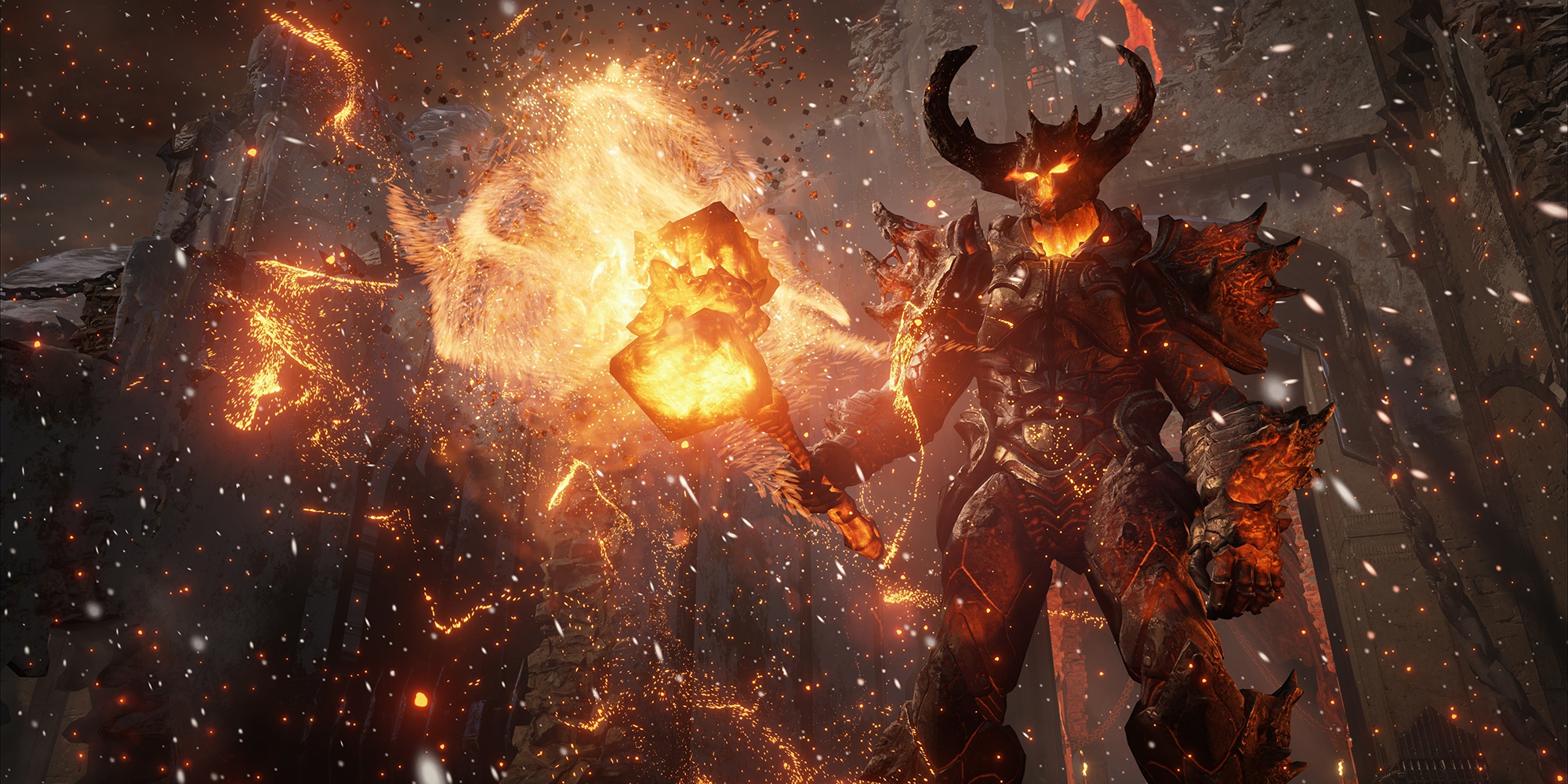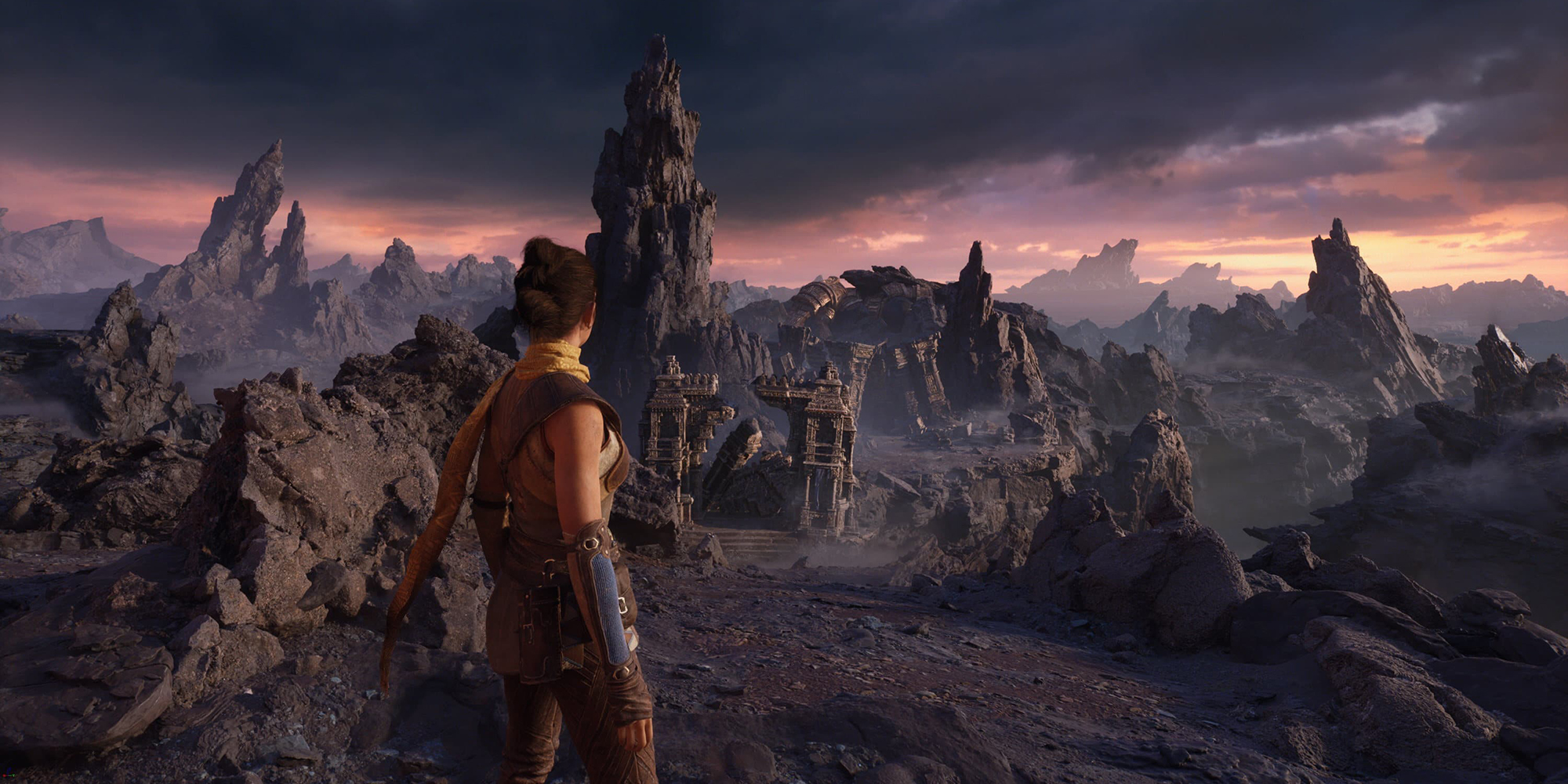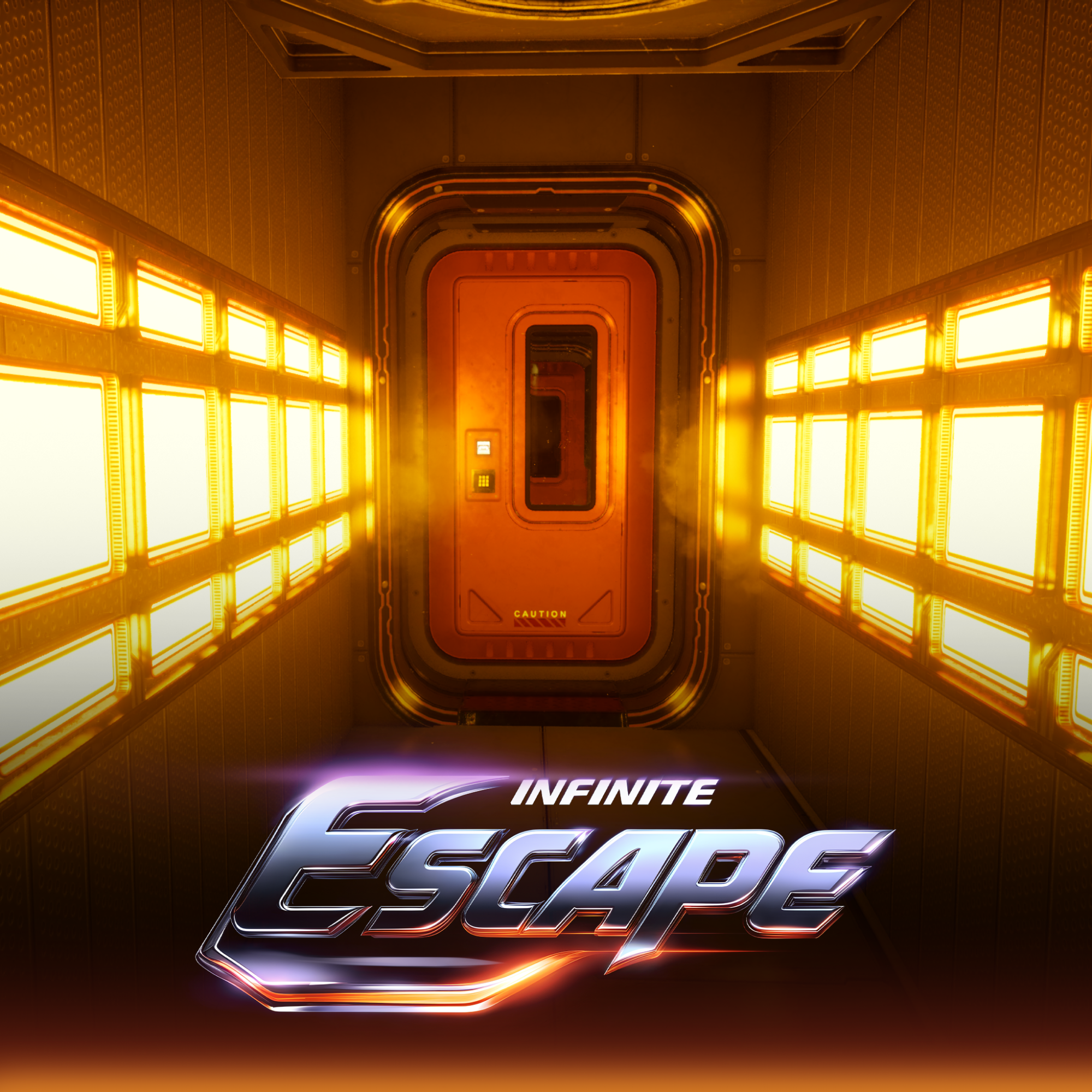Unreal Engine's evolution from version 4 to 5 marks a pivotal shift for any Unreal game development company. This transition isn't merely about upgrading tools — it's a comprehensive overhaul redefining digital creation's boundaries. For developers entrenched in the Unreal ecosystem, understanding these changes is crucial.
The introduction of Unreal Engine 5 (UE5) heralds new possibilities and challenges, offering advanced features that significantly impact how games are designed, developed, and delivered. As we explore these engines side by side, the focus will be on tangible differences and practical implications for game developers.
From Nanite's revolutionary approach to geometry to Lumen's dynamic global illumination, each element of UE5 is a game-changer, pushing the frontiers of what's achievable in game development. This comparison aims to give Unreal game development companies a clear perspective on how these engines differ and their potential impact on their projects.
Evolution from Unreal Engine 4 to 5
The transition from Unreal Engine 4 to 5 is more than an upgrade; it's a transformative shift in game development technology. This section highlights key differences in the Unreal Engine 4 vs. 5 comparison, focusing on how these changes revolutionize aspects of game design, rendering, and overall development efficiency.
Key Technological Advancements in Unreal Engine 5
Unreal Engine 5's key technological advancements significantly impact the process of understanding Unreal Engine Blueprints, elevating the capabilities of game developers. The introduction of the Nanite virtualized geometry system revolutionizes the creation of highly detailed environments, enabling an unprecedented level of detail.
Coupled with this, the Lumen global illumination and reflection technology brings a new standard of realism in lighting and reflections, enhancing visual fidelity without the extensive manual labor previously required. Additionally, MetaSounds, UE5's advanced audio system, offers a dynamic framework for sound design, which is crucial for creating immersive game experiences.
These enhancements improve the sensory aspects of games and streamline the development process. For developers, these advancements are a game-changer, offering new levels of creativity and efficiency in understanding and utilizing Unreal Engine Blueprints in game development.
Impact on Game Development and Business Opportunities
The impact of Unreal Engine 5 on game development and business opportunities is profound, offering several key advantages:
1. Enhanced realism and immersion
UE5's advanced rendering capabilities, like Nanite and Lumen, allow for incredibly lifelike environments and lighting. This enhances player immersion, potentially leading to higher engagement and longer play sessions.
2. Streamlined development process
Game developers can manage large worlds more efficiently with features like the improved World Partition system. This reduces development time and costs, enabling faster time-to-market for new titles.
3. Broader creative possibilities
UE5 opens new creative avenues with its high-fidelity graphics and dynamic sound design. This allows developers to explore innovative game concepts that were previously unfeasible, potentially capturing new market segments.
4. Attracting investment and partnerships
The cutting-edge capabilities of UE5 can attract more investors and partners looking to capitalize on the latest technology in gaming, thereby expanding business opportunities for developers.
Each of these points highlights the significant role Unreal Engine 5 plays in advancing game development technology and shaping the gaming industry's business landscape.

Unreal Engine 5 vs. 4 Performance and Efficiency
Unreal Engine 5's leap in performance and efficiency over Unreal Engine 4 marks a significant milestone in game development technology. This transition is characterized by UE5's optimized resource management and improved runtime efficiency, establishing new benchmarks in engine capability and setting it apart from its predecessor.
Unreal Engine 4: Strengths and Limitations
Unreal Engine 4, known for its robustness in game development, has its own set of strengths and limitations, especially in the context of how to make a multiplayer game:
- Versatile multiplayer support. UE4 provides a solid foundation for multiplayer game development, offering a range of tools and features that streamline networked game creation.
- Mature and extensive community resources. With its long-standing presence, UE4 boasts a vast community, providing an abundance of learning resources, plugins, and assets.
- Limitations in graphical rendering. Compared to UE5, UE4 has limitations in rendering capabilities, impacting the visual quality of highly detailed environments.
- Performance constraints in large-scale environments. For massive, open-world multiplayer games, UE4 can face performance challenges, requiring more optimization efforts from developers.
Understanding the aspects of UE4 is crucial for developers, particularly when planning and executing the development of multiplayer games.
Unreal Engine 5: Enhancements and Business Implications
Unreal Engine 5 brings significant enhancements and business implications, particularly in the realm of how to make a multiplayer game in Unreal Engine:
- Advanced multiplayer capabilities. UE5 elevates the multiplayer game development process with improved networking and more efficient asset streaming, which is essential for large-scale multiplayer environments.
- Increased market appeal. The engine's cutting-edge features can attract a broader audience, potentially increasing revenue opportunities for multiplayer games.
- Cost-effective development. UE5's streamlined workflows and enhanced tools reduce development time and costs, especially beneficial for multiplayer game projects.
- Expanded creative horizons. The engine's advanced graphics and audio capabilities enable developers to create more immersive and innovative multiplayer experiences, setting new standards in the industry.
The advancements in UE5 described above not only enhance the technical aspects of game development but also open new avenues for business growth and innovation in the multiplayer gaming sector.
Comparing Graphics and Realism in Unreal Engine 4 and 5
The graphical comparison between Unreal Engine 5 vs. 4 is a journey through evolving realism and visual fidelity in game development. This section examines how UE5's enhanced graphics reshape the benchmarks of realism, contrasting them with UE4's capabilities to highlight the progression and impact on visual storytelling.
Unreal Engine 4: Visual Capabilities

In comparing Unreal Engine 5 vs. Unreal Engine 4, UE4's visual capabilities stand out as both robust and versatile, albeit with certain limitations relative to its successor. UE4 has been the backbone of many visually stunning games, offering a comprehensive suite of tools for creating detailed environments and complex visual effects. Its well-developed lighting and shading systems have enabled developers to achieve a high level of realism and artistic expression.
However, when juxtaposed with UE5, UE4's limitations become apparent, particularly in handling vast geometrical details and dynamic lighting scenarios. Despite these constraints, UE4 continues to be a powerful tool for game developers, providing a balance of performance and visual quality that has driven the industry forward until the advent of Unreal Engine 5.
Unreal Engine 5: Next-Generation Graphics

Unreal Engine 5 sets a new standard in next-generation graphics, pushing the boundaries far beyond what Unreal Engine 4 offers. At its core, UE5's Nanite technology allows for unprecedented geometric detail, creating highly complex and intricate scenes with millions of polygons without sacrificing performance. The introduction of Lumen, a fully dynamic global illumination system, brings realism to lighting and reflections, adapting in real-time to changes in the environment.
These advancements, coupled with improved texturing and shading capabilities, allow for a level of visual fidelity previously unattainable. This leap in graphic quality not only enhances the aesthetic appeal of games but also deepens player immersion, making environments and characters more lifelike and engaging. The graphic prowess of Unreal Engine 5 is a game-changer, ushering in a new era of visual storytelling and game design possibilities.
Ease of Use and Learning Curve
Navigating the ease of use and learning curve in Unreal Engine 4 vs. Unreal Engine 5 reveals contrasting experiences for developers. This introduction examines how these two engines differ in user-friendliness and the journey of mastering their respective tools, impacting the accessibility and efficiency of game development.
Unreal Engine 4: User Experience and Learning Resources
Unreal Engine 4 offers a distinctive user experience and a wealth of learning resources, essential for both new and experienced developers:
- Intuitive interface. UE4's user interface is designed for accessibility, making it easier for newcomers to start their game development journey.
- Comprehensive documentation. Extensive official documentation provides in-depth guidance on every aspect of the engine, from basic functions to advanced features.
- Active community support. A robust and active community exists around UE4, offering forums, tutorials, and shared projects, which are invaluable for learning and problem-solving.
- Blueprint visual scripting. The Blueprint system in UE4 simplifies complex coding, making game development more accessible to non-programmers and speeding up the development process.
- Regular updates and improvements. Continuous updates to UE4 ensure that users have access to the latest tools and features, keeping the learning resources relevant and up-to-date.
These factors combine to make Unreal Engine 4 a user-friendly platform with abundant resources for learning and development.
Unreal Engine 5: Improvements and New Features
Unreal Engine 5 brings about a new era in game development, showcasing significant enhancements and groundbreaking features that redefine the Unreal Engine 4 vs. 5 performance landscape:
- Revolutionary Nanite architecture. UE5's Nanite system transforms environmental detailing, enabling complex scenes with minimal performance hits, a leap beyond UE4's capabilities.
- Dynamic Lumen lighting. The introduction of Lumen brings to life responsive, real-time illumination and reflections, surpassing UE4's static lighting setups for heightened realism.
- MetaSounds audio evolution. Using a quantum leap, MetaSounds in UE5 provides nuanced audio control, enhancing dynamic soundscapes beyond UE4's framework.
- Next-Gen console optimization. Tailored for cutting-edge hardware, UE5 maximizes performance on new consoles, a stride ahead of UE4's optimization.
- World partition innovation. This feature reimagines managing expansive game worlds, streamlining development processes beyond the level streaming of UE4.
These breakthroughs in UE5 accelerate performance metrics and empower developers with tools to craft more affluent, more immersive gaming experiences, distinguishing it significantly from its predecessor.
Industry Adoption and Case Studies
Exploring the widespread embrace of Unreal Engine in the gaming industry reveals a tapestry of innovation and success. Through diverse case studies, we gain a unique perspective on how studios and developers harness the engine's capabilities, illuminating its transformative role in shaping modern game development.
Notable Projects Using Unreal Engine 4 and 5
Unreal Engine 4 and 5 have been instrumental in developing several notable projects, showcasing their unique capabilities and strengths.
For Unreal Engine 4:
- Shin Megami Tensei V. Players explore an alternative Tokyo, embroiled in a battle between angels and demons. Unreal Engine 4 masterfully renders a breathtaking world, showcasing its ability to create detailed and immersive environments in this mythological setting.
- PlayerUnknown's Battlegrounds (PUBG). A leader in the battle royale genre, PUBG boasts a massive following. Its slightly dated graphics still display Unreal Engine 4's capability to handle large-scale, multiplayer environments, making it a benchmark in online gaming experiences.
- Octopath Traveler. This JRPG, known for its exceptional graphics and lighting, demonstrates Unreal Engine 4's ability to render highly detailed 2D graphics that verge on photorealism, offering a visually stunning and nostalgic gaming experience.
- Evil West. This engaging third-person shooter casts players as Jesse Rentier, a dauntless vampire hunter, with complex bosses, skill progression, and cooperative campaign. Game-Ace's expertise in refining multiplayer features using Unreal Engine 4 significantly enhances its appeal and playability.
For Unreal Engine 5:
- ArcheAge II. This upcoming Korean MMO uses Unreal Engine 5 technology, highlighting elements like housing, naval warfare, and vehicle physics simulation. The core design theme of freedom is expected to be elevated by UE5's advanced capabilities.
- Ark 2. Developed by Studio Wildcard, this sequel to the popular survival sandbox game is being built exclusively with Unreal 5 for Xbox Series X|S. It features actor Vin Diesel, not only as a character but also as an executive producer.
- Ashes of Creation. This project transitioned from Unreal 4 to Unreal 5, a move that demonstrates the seamless migration capabilities between the two engines. Although still in the alpha phase, the game is expected to benefit significantly from UE5's advancements.
- Black Myth: Wukong. An exciting adaptation of the classic Journey to the West novel, this game uses Unreal 5 to deliver intense boss battles and impressive particle effects. It's a vivid example of UE5's potential in creating action-packed, visually stunning games.
These projects illustrate the diverse applications and impact of Unreal Engine 4 and 5 in the gaming industry, from creating rich, immersive worlds in RPGs to handling large-scale multiplayer environments.
Ultimate Side by Side Comparison of Unreal Engine 4 vs. 5
| Feature/Aspect | Unreal Engine 4 | Unreal Engine 5 |
| Graphics | Solid rendering capabilities, but less detailed compared to UE5. | Nanite technology for highly detailed environments. |
| Lighting | Advanced static lighting systems. | Lumen for dynamic global illumination and reflections. |
| Performance | Efficient for its time, but can struggle with large-scale environments. | Optimized for next-gen hardware, better at handling complex scenes. |
| Audio | Competent audio features. | MetaSounds for dynamic, high-fidelity audio experiences. |
| Ease of use | Intuitive interface, strong community support. | Enhanced user experience with improved UI and workflow. |
| Development flexibility | Strong in multiplayer and large-scale game support. | Advanced tools for more creative freedom and complex designs. |
| Learning resources | Extensive documentation and community resources. | Continually growing learning materials and community support. |
Endless Runner Game Development: Infinite Escape's Unique Approach

Infinite Escape is a futuristic endless runner featuring procedurally generated environments and engaging mechanics. Developed in Unreal Engine, it offers seamless control, smooth animations, and scalable difficulty on PC, Xbox X/S, and PS5. Discover how endless runner game development can shape immersive gaming.
Find Your Path in Gaming Business with Game-Ace
At Game-Ace, our journey as a custom game development company transcends mere service — a fusion of passion, innovation, and unparalleled expertise. Our involvement in projects like Evil West, harnessing the full potential of Unreal Engine, is a testament to our commitment to excellence. When you get in touch with us, you are not just reaching out to a company; you are igniting a collaboration with a deeply invested team in redefining the gaming landscape.
Our blend of creativity, technical prowess, and keen insight into gaming trends positions us uniquely to elevate your project beyond the ordinary. Let Game-Ace be the architect of your next gaming success story — where your vision meets our expertise. Contact us.
 Unlocking Cinematic Quality in Unreal Engine 5.6: Insider Tips from GameDev Industry Pros
Unlocking Cinematic Quality in Unreal Engine 5.6: Insider Tips from GameDev Industry Pros  How to Develop an Endless Runner Game in Unreal Engine: A Step-by-Step Guide
How to Develop an Endless Runner Game in Unreal Engine: A Step-by-Step Guide  The Best Game Engines: Research from Game-Ace Specialists
The Best Game Engines: Research from Game-Ace Specialists  Unity vs Unreal: Two Main Game Engines Compared by Game-Ace
Unity vs Unreal: Two Main Game Engines Compared by Game-Ace  The Full Guide of Unreal Engine Game Development
The Full Guide of Unreal Engine Game Development 


































